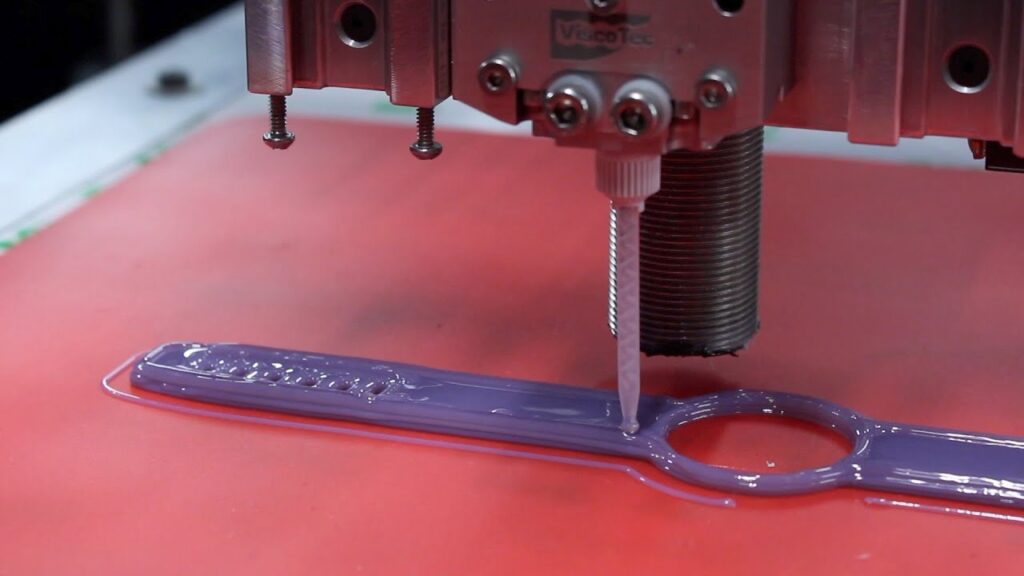Large-format 3D printer manufacturer JuggerBot has received a $4 million grant to develop a large format 3D printer, courtesy of the Under Secretary of Defense, Research and Engineering Manufacturing Technology (OSD(R&E)), facilitated through the Air Force Research Laboratory (AFRL). The AFRL is rapidly emerging as one of the largest sources of funding of the 3D printing industry, and this grant to JuggerBot acknowledges the company’s expertise in pellet and other material extrusion systems, despite being relatively small and not widely recognized. Additionally, America Makes will collaborate with JuggerBot on this project. Concurrently, funding has also been allocated to universities for research in material characterization, predictive modeling, and process parameter validation.
The Large Format Hybrid Material Additive Manufacturing (AM) system is a bit of a strange new beast, in that it combines large format pellet 3D printing with two-component resin printing. Pellet extrusion is known for its speed and cost-effectiveness, with pellets often costing a fraction of the price of filament. However, it typically results in rougher textures. The hybrid system aims to address this by incorporating a two-component system, likely involving a mixing head that blends materials such as epoxies, latex, or silicones. This setup allows a single printer to produce large, cost-efficient parts using the pellet head, while the mixing head can apply a hard, smooth coating or dispense reinforced or fiber-type materials, enhancing the parts’ functionality and appearance. While this approach poses challenges and is not straightforward, it holds the potential to create large components efficiently by merging the advantages of thermoset materials with those of widely available thermoplastics. This could significantly benefit the Air Force, enabling the production of smooth jigs and large vehicle components.
The company has highlighted structural epoxies as a key focus area, which have previously been utilized in conjunction with carbon fiber. Materials like Araldite have been employed for bonding car and construction components. Integrating these with pellet extrusion of PEI (ULTEM) or other high-strength materials could significantly broaden the application scope of the technology.
In a press release, the team referred to “limited-life aircraft” as a potential use case, underscoring the technology’s importance. The U.S. is currently engaged in efforts, through initiatives like the Replicator and other programs, to rapidly produce attritable aircraft and drones. Programs focusing on loyal wingmen and low-cost unmanned aerial vehicles (UAVs) are crucial to the country’s future defense strategy. Our Drone Swarms series delves deeper into this topic.
Essentially, a scenario where a carrier faces an onslaught of ten thousand UAVs within a single minute would result in overwhelming the carrier’s defenses. Continuously producing such drone swarms could establish a formidable area denial capability. Consequently, the U.S. requires a viable solution capable of manufacturing UAVs near the frontline at high speeds. A fast pellet printer capable of smoothing over components and enhancing their strength could offer a cost-effective method for producing attritable aircraft. JuggerBot has indeed stumbled upon a significant opportunity with the potential to make a substantial impact if successful.
JuggerBot previously undertook a direct ink write (DIW) hybrid project for Aberdeen Proving Ground, where the firm specialized in DIW for functionally graded thermoset materials. This research has highlighted that such materials are high-performance with a potentially promising future, underscoring their significance in advancing manufacturing technologies.
“The Institute is proud to partner with JuggerBot on this effort,” said Brandon Ribic, the Technology Director of America Makes. “We have observed the benefits and impact of large-scale AM technologies for various aerospace applications within the last two years and are eager to learn how JuggerBot will leverage their advanced hybrid AM technology and accelerate our domestic manufacturing capabilities in an industrially relevant manner.”
The project will utilize Juggerbot’s Tradesman Series 3D printer, capable of printing up to 13 kilograms of material per hour. With a build volume of up to 914 x 1219 x 1219 mm, the system features a heated chamber and can heat the build plate to 120°C. This capability is crucial for printing large parts, as it helps to control the conditions during the printing process, ensuring better quality and consistency.

“Finding success with this project will generate significant value for the U.S. Air Force and the broader additive manufacturing industry by showcasing the use of thermoset and thermoplastic hybrid extrusion. This initiative will expand upon the achievements from previous programs we have taken on in both faculties. We are excited to leverage our expertise once again to meet the industry’s critical requirements and look forward to growing our team while collaborating with project partners throughout this program. Designing and developing this novel technology for large format composites will enhance the Aerospace and Defense Industrial Base to reduce time and cost associated with the production of critical parts in a timeframe urgent to meet the needs of their industry,” said JuggerBot 3D President Zachary DiVencenzo.
The award might appear to be just one among many currently being granted, but I encourage a closer examination and continued attention to this story as it develops. The U.S. military faces a significant challenge in rapidly producing full-sized components and vehicles. Despite its advanced technology, it could potentially be outmatched by adversaries with a larger quantity of simpler vehicles. Therefore, a swift solution for producing high-strength plastic components could plug a lot of holes in the U.S. military’s future efforts. Should this project succeed, it could play a crucial role in strengthening the military’s capabilities.


































